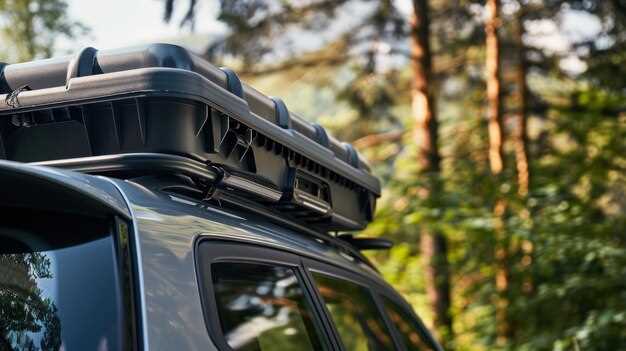
When it comes to overland adventures, maximizing storage is essential, and equipping your Land Cruiser with a reliable roof rack can make all the difference. Roof racks provide not only extra cargo space but also the ability to securely transport gear that may not fit inside the vehicle. This added versatility is crucial for long expeditions where every square foot counts.
The Land Cruiser, known for its ruggedness and off-road capabilities, serves as a perfect platform for overland builds. However, the challenge often lies in efficiently utilizing the available space. A high-quality roof rack allows adventurers to carry essential equipment like tents, coolers, and other outdoor gear, freeing up interior space for passengers and personal items. Selecting the right roof rack is, therefore, not just about enhancing storage but also about ensuring that your adventures remain comfortable and organized.
In this article, we will explore some of the top roof racks specifically designed for Land Cruiser overland builds. Each option offers unique features tailored to withstand the demands of off-road travel while providing optimal storage and convenience. Whether you’re a seasoned overlander or just starting your journey, understanding these top contenders will help you make an informed decision that enhances your outdoor experience.
Choosing the Best Roof Rack Material for Durability
When selecting a roof rack for your Land Cruiser overland build, the material of the rack is a crucial factor for ensuring durability and longevity. The most common materials used in roof racks include aluminum, steel, and plastic composites, each offering distinct advantages and disadvantages.
Aluminum racks are lightweight yet robust, making them an excellent choice for off-road adventures. Their resistance to rust and corrosion means that they can withstand harsh environments, particularly in wet or salty conditions. However, one downside is that they may not be as strong as steel racks, which can be a consideration if you plan to carry heavy loads.
Steel roof racks are renowned for their strength and durability. They can handle substantial weight and are often preferred for heavy-duty applications. However, steel is heavier than aluminum, which may affect fuel efficiency and handling. It is essential to look for powder-coated or galvanized options to prevent rusting.
Plastic composites are a newer option and offer a lightweight alternative with good durability. They are resistant to corrosion and UV damage, making them suitable for diverse weather conditions. Nonetheless, their ability to handle extreme weight may not match that of steel or aluminum counterparts, so the intended use should guide your choice.
Ultimately, the best roof rack material hinges on your specific needs. Consider the weight of your gear, the environmental conditions you will face, and how often you plan to use the rack. Each material has its unique benefits; finding the right balance between weight, strength, and corrosion resistance will ensure you have a reliable roof rack for your overland excursions.
Maximizing Storage Capacity: Accessories for Your Roof Rack

When outfitting your Land Cruiser for overland adventures, enhancing your roof rack’s storage capacity is essential. Roof racks provide a versatile platform for carrying various gear, but the right accessories can significantly increase efficiency and organization.
1. Cargo Basket: A cargo basket is an excellent addition for transporting larger items. With side rails, it prevents your gear from sliding off during transit. Its open design allows for quick access to stored items, and it can accommodate a multitude of outdoor equipment.
2. Roof Bag or Cargo Bag: Utilizing a soft roof bag maximizes storage while providing additional weather protection. These bags often feature waterproof materials and can be easily zipped closed. They are perfect for storing clothing, sleeping bags, or any soft goods that might otherwise clutter the interior of your vehicle.
3. Lockable Canoe and Kayak Carriers: For adventurous souls eager to hit the water, kayak carriers designed specifically for roof racks offer safe transport solutions. These accessories enable you to carry your paddling gear securely without compromising other storage areas.
4. Ladder Extension: Incorporating a ladder extension not only aids in accessing rooftop items but also allows for better mounting of accessories. It facilitates easier loading and unloading of larger gear, ensuring your storage space is utilized effectively.
5. Roof Tent: Adding a roof tent can transform your roof rack into a compact sleeping area. This is particularly advantageous for off-the-grid camping, as it not only frees up space inside your Land Cruiser but also elevates you from ground-level wildlife disturbances.
6. Crossbars and Load Bars: By installing additional crossbars or load bars on your roof rack, you can create more mounting options for various accessories. This flexibility allows you to organize your storage better and keep specific items easily accessible.
Investing in quality accessories for your roof rack will greatly enhance your Land Cruiser’s capacity for overland journeys. These solutions offer an effective way to carry all your adventure gear while keeping your experience organized and enjoyable.
Installation Tips for Securely Mounting Your Roof Rack

When installing a roof rack on your Land Cruiser, it is crucial to ensure a secure and stable fit to withstand the rigors of overland travel. Start by thoroughly reading the manufacturer’s instructions that come with your roof rack. Each product may have specific installation requirements that need to be followed for optimal safety and functionality.
Before you begin, gather the necessary tools, such as a torque wrench, socket set, and screwdrivers. A clean workspace will help you avoid misplacing any parts during the installation process. It is advisable to conduct the installation in a shaded area to prevent any components, especially metal parts, from overheating which could make them difficult to handle.
Next, prepare your roof by cleaning the mounting area of your vehicle thoroughly. Remove any dirt, debris, or old adhesives to ensure a strong bond between the roof and rack. Use a soft cloth and an appropriate cleaner to avoid scratching the paint.
After the roof is prepped, align the roof rack precisely according to the mounting points of your vehicle. Make sure that the rack is evenly spaced from all edges for a symmetric load distribution. Consider using rubber or foam pads under the mounting brackets to minimize vibration and protect the vehicle’s surface from scratches.
As you start securing the rack, gradually tighten the bolts while checking the alignment regularly. It is important to follow the torque specifications provided in the instructions to avoid over-tightening, which could lead to damaging the roof or the rack itself. Using a torque wrench will ensure that you achieve the right tightness without exceeding recommended limits.
After installation, conduct a thorough inspection to ensure all components are securely fastened. It is highly recommended to perform a test drive before embarking on a long journey. Pay attention to any unusual noises, which may indicate a loose roof rack. Make adjustments as necessary to guarantee a safe and reliable setup.
Regularly check your roof rack and its mounting points for wear and tear, especially before long trips. This proactive maintenance will help ensure that your equipment remains secure throughout your overland adventures.
